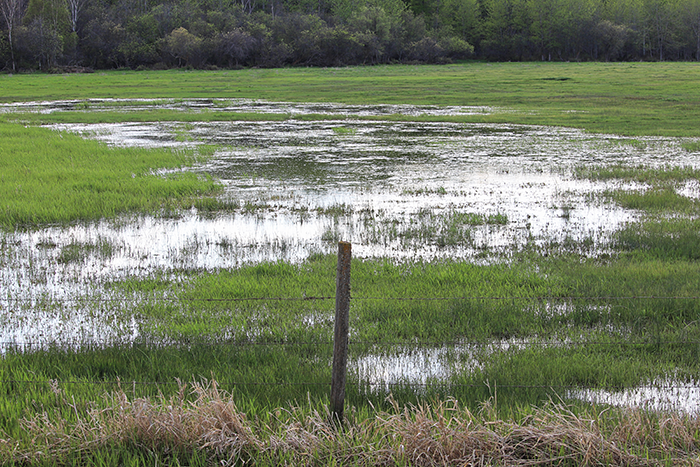A gritty issue in flooded fields |
| By Amber Friedrichsen, Managing Editor |
|
|
 Some of the same farmers who felt the death grip of a historic drought last year have faced torrential rainfall and excessive flooding this summer. Saturated soils and prolonged standing water have amounted to immense losses in pastures and crop fields in the Midwest and parts of the High Plains. Sandy deposits can be a significant setback for flooded fields. Michael Witt with Iowa State University Extension says shallow sand deposits can be incorporated into the soil with tillage, whereas deeper pockets may need to be spread out first or entirely removed from the surface. The field agronomist recommends assessing fields and mapping out sand deposits to determine the best clean-up approach. Sand scouting If sand is 2 to 8 inches deep, use tillage to blend it with the underlying soil; anything less than 2 inches can most likely be mitigated with normal field operations. Witt notes tillage depth will depend on the amount of sand and underlying soil texture. He adds the goal is to achieve a resulting modified soil that still has adequate water holding capacity in the root zone. “For silty clay loam soils, tilling sand to a depth of at least 1.5 times the original sand depth is recommended,” Witt says. “Sandy soils may require tillage to a depth of twice the sand depth, or more, for satisfactory results.” Use a front-end loader to spread out sand drifts that are more than 4 inches deep. If drifts are deeper than 2 feet, however, it may be prudent to consider the cost of moving sand off the field and omitting the area from future production. In any case, use caution with heavy equipment in flooded fields since saturated soils will be slow to drain. Witt recommends subsequent soil testing to inform good management moving forward. Take separate samples where sand accumulations varied and consider adding organic matter like compost or manure to those areas affected by the greatest amounts of sand. Other implications Additional items on the post-flood to-do list include repairing gullies, clearing debris, and assessing compaction. Erosion likely had the worst impact where water velocity was highest during a flood. Witt suggests shallow erosion can be remedied with strategic tillage, whereas deeper gullies may need to be filled. “In some cases, severely eroded areas may be too expensive to repair,” Witt states. “Selective abandonment of small areas may be a more logical choice.” Before engaging in fieldwork after flooding, survey the type and amount of debris on the landscape. Depending on flood intensity and duration, debris can include building materials, barrels, tanks, and assorted garbage. Hazardous items like fuel tanks or unmarked containers should be collected and stored separately for proper disposal. Plant debris that piles up in fields or pastures can also be problematic. Like sand, plant debris may need to be spread out before being incorporated it into soil with tillage, or entirely removed from the field. In Iowa, Witt says burning plant debris, trees, and building materials is also an option, as long as there are no tires, asbestos, or asphalt shingles present. As for compaction, flood water itself doesn’t typically cause it. In fact, saturated soil can be more resistant to compaction as soil pores become filled with water. Flood water can degrade soil structure, though, and a dense layer of consolidated silt may form within the soil profile, which creates similar effects as compaction by reducing water infiltration and plant root penetration. |
